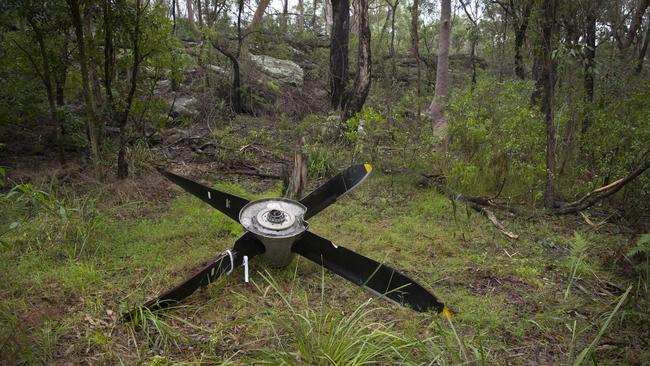‘Unseen fatigue cracks’ behind Rex propeller loss
Fatigue cracking in the propeller shaft went unnoticed because maintenance engineers were not told to look for it.

The final report on the mid-flight loss of a propeller by a Regional Express (Rex) aircraft over Sydney last year found fatigue cracking in the propeller shaft went unnoticed because maintenance engineers were not told to look for it.
The March 17 flight from Albury to Sydney had 19 people on board when it experienced vibrations from the right engine.
As the pilots went through the checklist, the vibrations worsened, so the decision was made to shut down the engine.
A short time later, the propeller came off, landing clear of property in a forest about 19km southwest of Sydney Airport.
The crew alerted air traffic control and the Saab 340 landed safely in Sydney with no injuries to passengers or crew.
Inspections subsequently found the propeller shaft had fractured because of a crack in a crucial mounting bracket.
The Australian Transport Safety Bureau report, delivered yesterday, found that the engine manufacturer’s maintenance documents did not include specific inspection procedures to detect fatigue cracking of the propeller shaft.
The ATSB investigation also found that Rex’s inspection worksheets did not provide for the recording of inspection findings.
“Consequently, this may not have provided for the best opportunity to ensure potential defects were identified, recorded and monitored,” the report said.
ATSB chief commissioner Greg Hood described the propeller loss as an “extremely rare event” and said the Rex crew should be commended for their response to the emergency.
“The captain and first officer demonstrated a high level of professionalism in their airmanship, communication, co-ordination and application of safety checklist procedures in their response,” Mr Hood said.
Since the incident, engine maker General Electric has changed maintenance manuals to include more detailed inspections of the propeller shaft.
The US Federal Aviation Administration has also issued an airworthiness directive requiring repetitive visual inspection of the main propeller shaft for affected engines.



